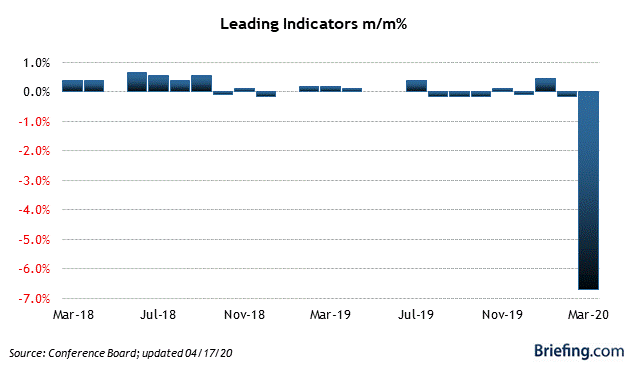What the Index of Leading Indicators tells us about the 2020 Presidential election
What the Index of Leading Indicators tells us about the 2020 Presidential election
One of the better econometric models that I made use of back in 2016 was that by Prof. Robert S. Erickson of Columbia University and Prof. Christopher Wlezien of the University of Texas at Austria, entitled “Forecasting the Presidential Vote with leading economic indicators and the polls”
The model takes two steps. First, average the head-to-head heats by the two major candidates during the first quarter of the election year. Second, apply the result of the Index of Leading Indicators at the end of the first quarter to that average.
Put simply: if Incumbent Candidate A leads (trails) Challenger Candidate B at the end of the first quarter of the election year, and the Index of Leading Indicators forecasts that the economy will continue to improve (decline), then Candidate A will win (lose). If Incumbent Candidate A leads (trails) Challenger Candidate B at the end of the first quarter of the election year, and the Index of Leading Indicators forecasts a reversal of the economic trend will reverse from improvement to decline (decline to improvement), then the race will tighten, and the outcome might reverse from that predicted by first quarter polling.
Applying this econometric approach to the 2020 election is very unfriendly to Donald Trump, to say the least. In all of the recent head-to-head match-ups with Joe Biden, Trump trails.
But worse is – well, here’s a look at the Index of Leading Indicators as it stands after March’s figure of -6.7% – the worst monthly decline ever recorded – was reported this morning:
Even before the March catastrophe, only 3 of the previous 10 months had been positive numbers. Essentially the index was treading water. As of now, it suggests that the next 4 to 8 months of the economy are going to be the worst since the Great Depression.
Voters are not going to blame Trump for the existence of the coronavirus, or the necessity for at least briefly shutting down the economy in order to halt the virus’s exponential growth. But they certainly can blame him for not acting fast enough, for his incoherence, and for his interference with States’ actions to ameliorate the situation. More succinctly, one or two months of awful news due to a natural catastrophe might be tolerated by voters. But if the awful news continues into the 3rd and maybe even 4th quarter — and the LEI suggests that it will do so for the next few months at least — voters are going to be extremely unforgiving.
At a feral level Trump knows this. That’s why he is left with a “Hail Mary” pass, hoping that if the economy is “opened up” in May the virus will miraculously abate, and that if it doesn’t, he can blame others.


Republicans have given up on him. That is why they are cranking up “Son of Tea Party” The Astroturf “resistance” to all things Democrat. This is so that as soon as the Party of Trillion $ deficits caused by tax cuts can immediately shift to the party of austerity because of “the children” and try to strangle everything the Biden administration tries to do to get the country back on its feat. We’ve seen this movie before and if the country falls for it a second time in this young century we will deserve everything that comes to us.
Trump has a distinct advantage going forwards. Only his own most loyal supporters are crazy enough to forgo social distancing guidelines and organize large public demonstrations. OTOH, if Trump succeeds in amassing a big enough body count among the brown and the elderly then he might get to see just how far the American people are willing to go when they visit their revenge on the Unforgiven. Not since 1932 has the US public been that politically motivated.
“Voters are not going to blame Trump for the existence of the coronavirus,”
Why not?
The virus was created by Putin’s people in a Grupo Modelo laboratory. That is why it is called CoronaVirus.
Trump was vaccinated when he met with Putin in Helsinki. How else can you explain his behavior? Then and now with ignoring any kind of social distancing.
#TrumpRecession #TrumpDepression
Good modeling tries not to extrapolate. Not an option here.